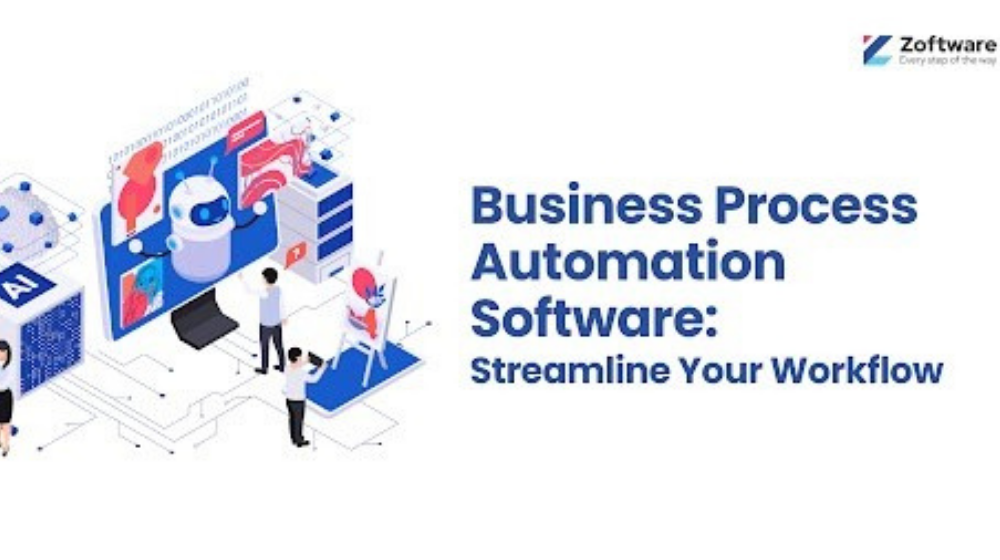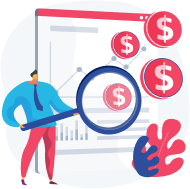Business Process Automation Software has become increasingly popular in recent years, as more and more businesses are looking for ways to streamline their operations and reduce costs.
Choosing the Best Business Process Automation Software is an important decision for any business. There are many different options available, each with its own set of features and benefits.
Some of the key features that businesses should look for include the ability to create custom workflows, integration with other software systems, and reporting and analytics capabilities. Additionally, businesses should consider factors like ease of use, customer support, and pricing when making their decision.
Key Takeaways
- Business Process Automation Software automates mundane tasks.
- Understanding Business Process Automation is key to realizing the full potential of this technology.
- Choosing the Best Business Process Automation Software involves considering factors like custom workflows, integration, and reporting capabilities, as well as ease of use, customer support, and pricing.
Understanding Business Process Automation
Business Process Automation (BPA) enables organizations to streamline their operations and reduce human error by automating routine tasks. BPA can be applied to various aspects of a business, including finance, human resources, sales, and marketing.
Best Business Process Automation Software
Business process automation software helps organizations streamline their operations, reduce costs, and improve productivity. With so many options available, it can be overwhelming to choose the right one. Here are some of the best business process automation software tools available in 2023.
IBM Cloud Pak for Automation
IBM Cloud Pak for Automation is a top-rated business process automation software that allows users to design, build, and run automation applications and services on any cloud. It uses pre-integrated automation technologies and low-code tools, making it easy to use even for those without extensive technical skills. IBM Cloud Pak is the latest deployment option of the IBM automation platform for digital business, making it a reliable choice for organizations of all sizes.
Appian BPM Suite
Appian BPM Suite is a comprehensive business process management software that offers a range of features, including process modeling, workflow automation, and analytics. It is highly customizable, making it a good choice for organizations with unique needs. It also offers low-code development capabilities, allowing users to build custom applications quickly and easily.
Redwood RunMyJobs
Redwood RunMyJobs is a cloud-based automation platform that offers a range of features, including job scheduling, process automation, and workload management. It is highly scalable and can handle large volumes of data and workloads, making it a good choice for organizations with complex operations.
UiPath
UiPath is a popular RPA software that automates repetitive tasks. It offers a range of features, including process mapping, workflow automation, and data extraction. It is highly customizable and can be integrated with other business process automation software tools.
Nintex
Nintex is a cloud-based workflow automation software that allows users to automate a range of business processes, including document management, HR processes, and sales processes. It offers a drag-and-drop interface, making it easy to use even for those without extensive technical skills. It also offers mobile capabilities, allowing users to access and complete tasks from anywhere.
Features of Business Process Automation Software
Business process automation (BPA) software is designed to streamline and optimize business workflows by automating repetitive and manual tasks. Here are some of the key features of BPA software:
Workflow Management
BPA software enables users to design, implement, and manage complex workflows. It provides a visual interface for creating workflows that automate business processes, such as approvals, notifications, and data entry. Users can also track the progress of workflows and receive alerts when tasks are completed or require attention.
Integration Capabilities
BPA software can integrate with a wide range of other business applications, such as CRM, ERP, and HR systems.
Process Analytics
BPA software provides detailed analytics and reporting capabilities, allowing users to monitor and optimize their business processes. Users can track key performance indicators (KPIs) and identify areas for improvement, such as bottlenecks or inefficiencies in workflows.
Robotic Process Automation (RPA)
Some BPA software includes RPA capabilities, which use bots or artificial intelligence to automate repetitive tasks. This includes tasks like data entry, invoice processing, and customer service inquiries. RPA can help to reduce errors and speed up processes, freeing up employees to focus on more complex tasks.
Low-Code Development
Many BPA software platforms offer low-code development tools, which enable users to create custom workflows and applications without the need for extensive coding skills. This can help to speed up the development process and reduce costs.
Overall, BPA software can help businesses to streamline their workflows, reduce errors, and improve efficiency.
Benefits of Business Process Automation Software
Increased Efficiency and Productivity
One of the main benefits of business process automation software is that it can help to streamline workflows and reduce the amount of time and effort required to complete tasks.
Improved Accuracy and Consistency
Automation software can also help to improve the accuracy and consistency of processes. By removing the potential for human error, organizations can ensure that tasks are completed correctly every time. This can help to reduce the risk of costly mistakes and improve the quality of outputs.
Increased Transparency and Visibility
Automation software can provide organizations with greater visibility into their processes. Customizable dashboards can offer real-time insights into the status of workflows, allowing managers to identify bottlenecks or areas for improvement. This increased transparency can help to improve decision-making and ensure that processes are aligned with organizational goals.
Enhanced Customer Experience
Automation software can also help to improve the customer experience by enabling organizations to respond more quickly to customer inquiries and requests. By automating order processing and support requests, organizations can reduce response times and improve the overall customer experience.
Cost Savings
Finally, automation software can help to reduce costs by eliminating the need for manual labor and reducing the risk of errors and rework.
Overall, business process automation software can offer a range of benefits to organizations, from increased efficiency and productivity to improved accuracy and consistency. By leveraging automation technology, organizations can streamline their workflows, improve decision-making, and enhance the customer experience while reducing costs and freeing up resources for other initiatives.
Choosing the Right Business Process Automation Software
Business Process Automation (BPA) software can help organizations streamline their workflows and reduce errors, leading to increased efficiency and productivity. However, with so many options available, it can be challenging to choose the right BPA software for your business needs. Here are some factors to consider when selecting the right BPA software:
1. Business Needs
Before choosing a BPA software, it’s essential to identify your business needs. Determine what processes you want to automate, what problems you want to solve, and what goals you want to achieve. This information will help you narrow down your options and choose a software that aligns with your business needs.
2. Features
Different BPA software offers different features. Some software offers basic automation, while others offer advanced features. Make a list of the features you need and compare them across different software options to find the one that best meets your requirements.
3. User Experience
The user experience of the BPA software is critical to its adoption and success. Consider software that offers training and support to ensure that your team can use it effectively.
4. Integration
BPA software must integrate with your existing systems and software to be effective. Consider the software’s compatibility with your current systems and check if it offers APIs or other integration options.
5. Scalability
As your business grows, your BPA software must be able to scale with it. Look for software that can handle your current needs and has the potential to grow with your business.
By considering these factors, you can choose the right BPA software that meets your business needs and helps you achieve your goals.
Conclusion
Business process automation software has come a long way to take the lead in setting up robust and efficient business processes. This software has enabled businesses to automate and manage manual, repetitive tasks, which would otherwise be done manually. Automation software is designed to prevent typical business process issues such as bottlenecks, errors, and inefficiencies.
The benefits of business process automation software are numerous. By automating repetitive tasks, businesses can free up their employees’ time to focus on higher-value, human-driven work. This not only improves the quality of work but also increases employee satisfaction.


